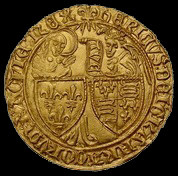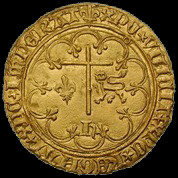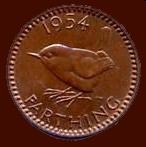








Designed by Nigel G Wilcox






The Paragon Of Metal Detecting
Powered By Sispro1
British Sterling Currency - Numismatics,
Salut d' or
For Reference ONLY
Everything For The Detectorist
Salut d' or


Henry VI 1422-1461 AD
It was the year 1420. Between England and France waged the Hundred Years' War. After a disastrous defeat of the French in the Battle of Agincourt and the following occupation of almost the whole of France, the French King Charles VI was forced to draw up the Treaty of Troyes with the English monarch Henry V. The agreement stipulated that the king of England would inherit the throne of France upon the death of King Charles VI. The French dauphin, also named Charles, was excluded from succession. To seal the agreement, the English king married the French king's daughter Catherine of Valois.
To mark the Treaty of Troyes - and the apparent end of the Hundred Years' War - the two monarchs, now related by marriage, issued a common coin, the salut d'or, in 1421. The obverse of the coin depicted the crests of both kingdoms, England and France.
Only a year later, however, both kings were dead. The English and the French crown were united under Henry VI, the only child of the English king and the French princess. Upon his "accession to power," the young king was only one year old. The child was under the guardianship of its mother, and was crowned in 1429. Subsequently, little Henry went to France for two years, where he was crowned King of France in 1431.
Henry VI continued to issue the salut d'or, which he had struck in huge amounts. The salut was to become one of the most highly esteemed coins of the 15th century. It owed its reputation at least in part to its convenience, for it was of the same weight and value as the gold florin and the English half-noble. At the same time, it was of great beauty and charm, having as obverse a representation of the Annunciation above the shields of France and England.
The Hundred Years' War went on all the same: In defiance of the Treaty of Troyes, the French dauphin had declared himself king Charles VII of France upon the death of his father. Even though he was only recognized in the south of France, Charles VII continued warfare against England. The Hundred Years' War ended in 1453, when Charles succeeded in conquering all English territories in France - with the exception of Calais, which was to remain a possession of the English crown until 1559.
Denomination: Salut d'or, Mint Authority: King Henry VI. of England and France, Mint: St L , Year of Issue: 1423 A.D. - 1427 A.D.
Weight (g): 3.12, Diameter (mm): 28 , Material: Gold.
It was the year 1420. Between England and France waged the Hundred Years' War. After a disastrous defeat of the French in the Battle of Agincourt and the following occupation of almost the whole of France, the French King Charles VI was forced to draw up the Treaty of Troyes with the English monarch Henry V. The agreement stipulated that the king of England would inherit the throne of France upon the death of King Charles VI. The French dauphin, also named Charles, was excluded from succession. To seal the agreement, the English king married the French king's daughter Catherine of Valois.
To mark the Treaty of Troyes - and the apparent end of the Hundred Years' War - the two monarchs, now related by marriage, issued a common coin, the salut d'or, in 1421. The obverse of the coin depicted the crests of both kingdoms, England and France.
Only a year later, however, both kings were dead. The English and the French crown were united under Henry VI, the only child of the English king and the French princess. Upon his "accession to power," the young king was only one year old. The child was under the guardianship of its mother, and was crowned in 1429. Subsequently, little Henry went to France for two years, where he was crowned King of France in 1431.
Henry VI continued to issue the salut d'or, which he had struck in huge amounts. The salut was to become one of the most highly esteemed coins of the 15th century. It owed its reputation at least in part to its convenience, for it was of the same weight and value as the gold florin and the English half-noble. At the same time, it was of great beauty and charm, having as obverse a representation of the Annunciation above the shields of France and England.
The Hundred Years' War went on all the same: In defiance of the Treaty of Troyes, the French dauphin had declared himself king Charles VII of France upon the death of his father. Even though he was only recognized in the south of France, Charles VII continued warfare against England. The Hundred Years' War ended in 1453, when Charles succeeded in conquering all English territories in France - with the exception of Calais, which was to remain a possession of the English crown until 1559.
Denomination: Salut d'or, Mint Authority: King Henry VI. of England and France, Mint: St L , Year of Issue: 1423 A.D. - 1427 A.D.
Weight (g): 3.12, Diameter (mm): 28 , Material: Gold.
Royal Monarchy
Copyright All Rights Reserved by Nigel G Wilcox E-Mail: ngwilcox100@gmail.com
Pages

Henry VI
Main Coin Menu

VIEW ALL MENUS
Member NCMD
6. S. Menu
























